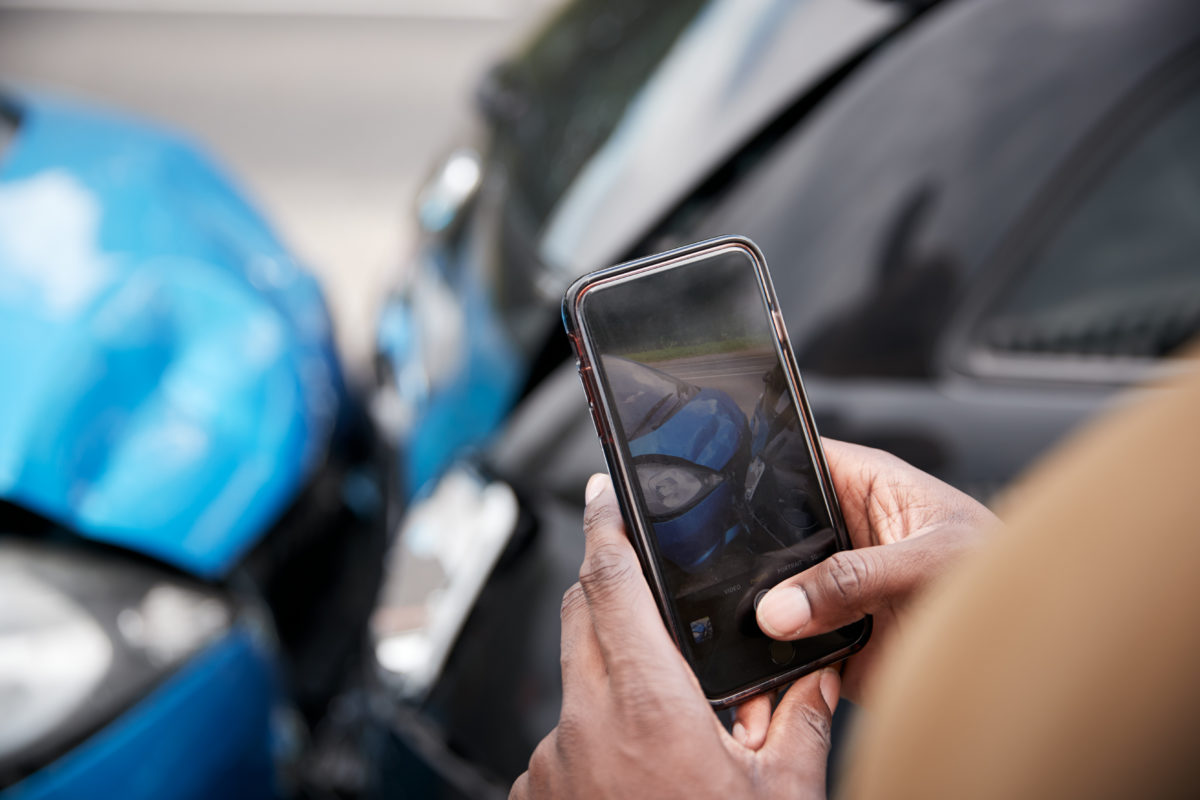
You may not remember every detail of your car crash, but photographs are one of the best ways to preserve evidence and keep the accident fresh in your memory. Even if you aren’t planning to press charges or file a claim, photographs give you options. After all, it’s difficult to argue with photographic evidence.
Also, if you change your mind and decide to file a personal injury lawsuit, photos come in handy when testifying in a deposition or court.
Important Photo-Taking Tips
Before going through the types of pictures you should take at the scene of the accident, make sure you read through these tips for taking clear, detailed photos:
Cover all possible angles
If all of your photos are taken from the same angle, insurance adjusters might accuse you of using photo editing tools. Take photos from the front, back, sides, and even beneath the vehicle if it’s safe to do so.
Get close
In addition to zoomed-out photos, try to take close-up, detailed shots of your vehicle and the accident scene.
Take as many photos as you can
Don’t be embarrassed to take dozens of pictures at the scene. Having a variety of photos will contextualize the crash for the insurance adjuster and cover all bases.
Types of Car Accident Photos To Take
If you were involved in a car crash in Chicago, give yourself the best chance of recovering compensation by taking many detailed photos.
Don’t just take a couple of wide-angle, blurry photos of the accident scene. If you do, the insurance adjuster may deny or undervalue your claim. You need to have clearly-defined, detailed photographs that leave no question as to what damage was done to your vehicle and injuries to your person.
If you do take photos and the insurance adjuster still refutes your claim, call Langdon & Emison, car accident attorneys in Chicago. We’ve seen all the tricks insurance companies try to pull on victims of car accidents. Even if they’ve taken good photos, sometimes the adjuster needs a final push to give you fair and equitable compensation.
For constructive representation and relentless advocacy in your car accident case, call Langdon & Emison at (866) 931-2115.
Damaged objects
Taking detailed pictures of damaged objects can paint a full picture of the cause of the accident and how the other driver may be liable. If you can, walk around the scene and take photos of damaged fences, poles, trees, guardrails, or other objects damaged in the crash.
Road conditions
Sometimes, a city or local government can be held responsible if issues or problems with roads contribute to an accident. You should take pictures of any major potholes, hidden signs, broken guardrails, cracks in the pavement, and construction zones around the accident.
The construction site may have been improperly managed or missing caution signs or signals. These are serious errors that can cause deadly accidents, and the government or organization who made the error should be held liable.
Traffic lights and stop signs
It’s important to take pictures of traffic lights in case there was any kind of malfunction or electrical problem at the time of the accident. For example, a flickering or dead traffic signal could help prove liability.
Stop signs are in the same vein – hidden or covered signs create a hazard and can point your lawyer in the direction of who is liable for the accident.
Weather conditions
Photos could be your best defense against an at-fault driver who blames an accident on the weather. They might try and argue that snow or rain caused them to swerve when they hit your car. If you have photographic evidence that there was no snow on the road or the rain wasn’t as heavy as they claimed, you’ll have a greater chance of recovering more compensation.
Vehicles and damage
Get plenty of photos of any damage to your vehicle, including broken glass or windows, scratches, and missing paint. An accident reconstruction expert can use these photos to determine if the damage was caused by the other car hitting yours.
Remember to only take photos when it is safe. Don’t put yourself in harm’s way if there is too much broken glass or debris to safely move around.
People involved in the crash
Take photos of the other driver(s) involved in the crash, as well as the reporting police officer and any witnesses. These will help clear up any confusion as to who was involved in the accident. Do not take pictures of injured people.
Injuries to your person
If you were seriously injured in a car accident, you should seek immediate medical attention – you can take photos later. However, if you suffered minor injuries in the crash, take photos or have someone take them for you. You must document the injuries that were directly caused by the accident.
It’s equally as important to document the progression or development of injuries over time. In the days and weeks following the crash, take photos of any injuries that appear. Many internal and other serious injuries will not appear immediately, so it’s important that you document them as soon as you notice them.
Make sure that you document all injuries before filing a lawsuit or entering into negotiations with the other party and their insurance company. If you do so before knowing the full extent of your injuries, you may miss out on the maximum amount of compensation available to you.
Imagine this: you are in a car accident but only suffer minor scrapes and bruises. The at-fault driver’s insurance company offers you a settlement and you take it. A few weeks later, you are in enormous pain and visit your doctor, who explains that you have a latent internal injury.
Now you have to treat an expensive injury but the settlement is far less than you need. Taking plenty of detailed photos will prevent this from happening.
Car Accident Lawyers in Chicago
If you were injured in a car accident, you’ll have lots of bills to pay – medical expenses, vehicle repairs, lost income, and more. If you want to file a claim or take the at-fault driver to court, you’ll need undeniable and detailed evidence to prove your case. One of the best types of evidence you can use are photographs.
Photographs are difficult to disprove by insurance adjusters. They may try to deny or undervalue your claim, but having plenty of clear, detailed pictures will prevent them from doing so.
If you were injured in a Chicago car crash, call the experienced Langdon & Emison car accident lawyers in Chicago for help. Taking photos will help your case, but having a competent and reputable lawyer at your side will give you the best chance of recovering the compensation you need. Call Langdon & Emison at (866) 931-2115 to schedule your free case consultation today.

